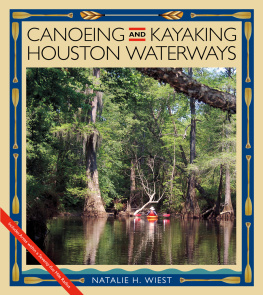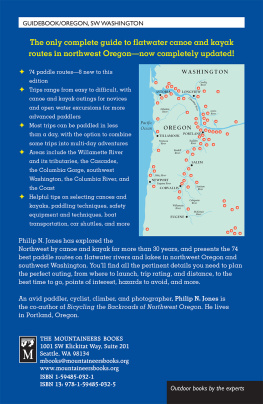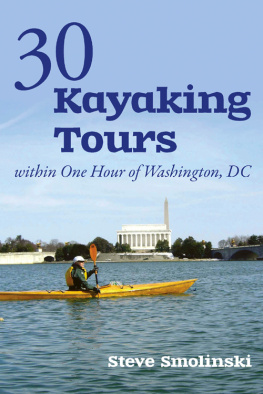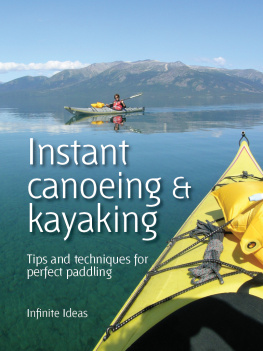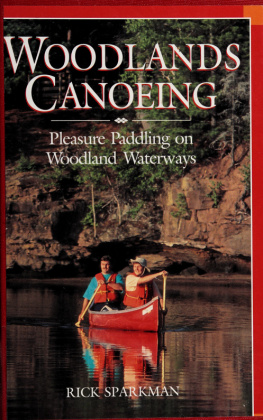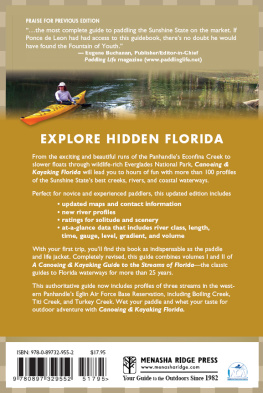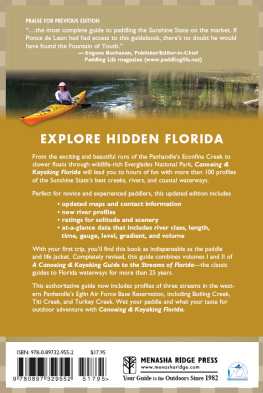Canoeing and Kayaking Houston Waterways


CANOEING AND KAYAKING HOUSTON WATERWAYS
Natalie H. Wiest
Maps by Jerry Moulden
Foreword by Andrew Sansom
TEXAS A&M UNIVERSITY PRESS College Station
Publication of this book was generously aided by a gift from the Jacob and Terese Hershey Foundation. The maps were created thanks to the generosity of Frank C. Smith, Jr. and Avon S. Duson of the Bayou Fund and a grant from the Bayou Preservation Association.
River Books
Sponsored by

| the River Systems Institute at Texas State University |
Andrew Sansom,
General Editor
A list of books in this series is available at the end of the book.
Copyright 2012 by Natalie Wiest
Maps copyright Shoreline Publishing
Manufactured in China by Everbest Printing Co.,
through FCI Print Group
All rights reserved
First edition
LIBRARY OF CONGRESS CATALOGING-IN-PUBLICATION DATA
Wiest, Natalie H., 1948
Canoeing and kayaking Houston waterways/Natalie H. Wiest ; maps by Jerry Moulden. 1st ed.
p. cm. (River books) Includes bibliographical references and index.
ISBN-13: 978-1-60344-764-5 (flex : alk. paper)
ISBN-10: 1-60344-764-4 (flex : alk. paper)
ISBN-13: 978-1-60344-775-1 (e-book)
ISBN-10: 1-60344-775-X (e-book)
1. Canoes and canoeingTexas, EastGuidebooks. 2. RiversTexas, EastGuidebooks. 3. WaterwaysTexas, EastGuidebooks. 4. Houston (Tex.)Guidebooks. 5. Texas, EastGuidebooks. I. Title.
GV776.T42W54 2012
797.12209764dc23
2012017274
Chapter opening art created by Gary Gore
to Terry Hershey, who saved Houstons natural waterways
Contents


Terry Hershey at Four Mile Ranch. Photo by Brian Swett.
Foreword
As Surely as Houston is defined by the oil and gas industry; as surely as Texas largest city is identified with humanitys first steps on the moon; Houston is identified and defined by its waterways and its bayous. The city began at the confluence of Buffalo and White Oak Bayous where, in 1836, the Allen Brothers first stepped ashore and founded Houstons first port. Today, as Natalie Wiest skillfully lays out in this eleventh volume of River Books, Allens Landing is part of a remarkable system of natural and cultural amenities associated with the citys water-courses that provide a rich and exciting venue for outdoor recreation and exploration.
Through the years, no name has been more identified with the defining feature of the Bayou City than that of Terry Hershey. Herself a true force of nature, Mrs. Hershey became alarmed that the cement channelization that had destroyed the natural beauty of Brays and White Oak bayous would also consume her beloved Buffalo Bayou. Vowing to ensure that the meandering integrity of the bayou would not be destroyed, she enlisted the help of oilman George Mitchell and a young Republican congressman named George H. W. Bush. With the help of the men she calls the Two Georges, Terry was successful in deleting funding for the improvement of Buffalo Bayou from the federal budget and thus saved the bayou from ruin.
When I returned to Texas in the late 1970s from Washington, DC, I was told that Terry Hershey was one of the most important environmental leaders in Texas and a person I must meet. For the last forty years, she has been one of my heroes. Terry not only changed the entire culture of Houston with respect to the care and management of its bayous, she founded most of the citys conservation organizations, including the Citizens Environmental Coalition, the Bayou Preservation Association, and the Park People (now part of the Houston Parks Board).
Terry and her late husband, Jake, created the Jacob and Terese Hershey Foundation, one of Texas leading environmental philanthropies. Inspired by her love of nature and its critters, the Hershey Foundation has helped make possible some of the states most significant conservation initiatives, including the Texas Land Trust Council and many more worthy efforts, including this book.
Thanks to Terrys support, here on these pages, the bayous and waterways of Houston are described in detail for the benefit of all who would seek a deeper level of appreciation for them and the pleasures and challenges they have to offer. I hope you will find Natalie Wiests work a springboard to your enjoyment of them. As you wind through their twists and turns, I hope you will take the opportunity to reflect that had it not been for one extraordinary woman, these beautiful natural settings would all be lined with cement.
So enjoy the bayous and waterways of Houston, and as you paddle along, thank Terry Hershey, who made possible both the experience and this guide.
Andrew Sansom
Preface
Where do you go? is the most frequent question I am asked when I mention canoeing or kayaking. I hope this book will answer that question and encourage readers to come and see for themselves the miles and miles of paddleable waterways all around Houston. It certainly deserves its nickname of Bayou City; and there are plenty of lakes, rivers, creeks, bays, and the Gulf of Mexico to paddle when the supply of bayous has been exhausted.
In addition to a constant supply of water, the Houston area is blessed with a climate that allows paddling opportunities year-round. Of course, we dont want to paddle into an approaching hurricane; days with high wind and thunderstorm activity are to be avoided, too, but it is never too hot or too cold to keep us off the water for any length of time.
The availability of relatively inexpensive plastic boats has made kayaking more affordable. Canoes seem to be less popular but are very efficient means of getting out on the water and can typically carry more gear and larger coolers than kayaks. They both have their place. Roof racks, both those provided by automobile manufacturers and those purchased separately, make it easy to carry these boats on the family sedan as well as SUVs and about any other kind of personal transportation.
This guide is intended for both novice and experienced paddlers, canoeists and kayakers. There is always one more place that calls for exploration, and the places we paddle change constantly. I have drawn from many sources for this guide. No one of us knows it all, and as I am writing and looking at maps, I see a continually expanding list of places I want to explore. It is gratifying that a number of organizations in and around Houston are taking up the case for maintaining natural waterways and making them more inviting and accessible. The Bayou Preservation Association comes immediately to mind, as well as the Buffalo Bayou Coalition, the Spring Creek Greenway, the Highland Bayou Quest, and Clear Creek Environmental Foundation, for example.
This guide outlines more than 1,500 miles of paddleable waterways in the Houston area. Of that total, I have personally paddled 500-plus miles in thirty years. At that rate, it looks like I will have plenty to keep me busy exploring waterways for at least the next ninety years. I hope you will enjoy paddling the Houston waterways as much as I have. There is so much to see and dolets go!

